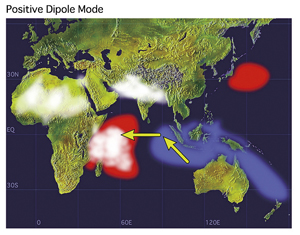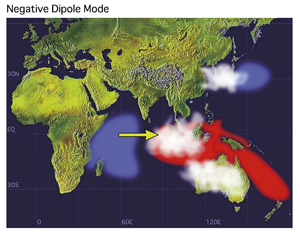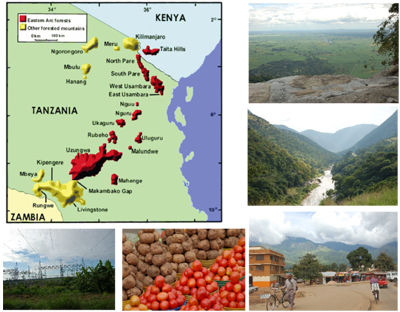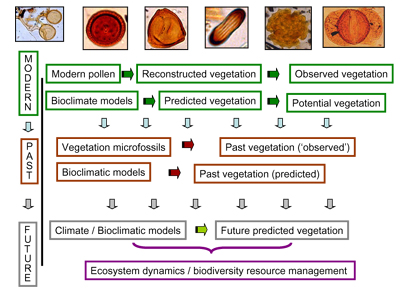Ocean Newsletter
No.151 November 20, 2006
-
Restoring Seaweed Beds from Barren Grounds into Rich Ecosystem
Akira Watanuki Alpha Hydraulic Engineering Consultants Co. Ltd
Preservation of seaweed beds is seen as an important issue. However, the seaweed withering phenomenon is also a major problem that deserves attention. As the reduction of the seaweed beds continues it has been found that grazing by sea urchins and herbivorous fishes are the principal causes..To remove sea urchins directly by fishermen and divers is effective but is a burden for fishermen. Thus, from an environmental protection perspective, there is a need for public assistance. In order to decrease the population of herbivorous fishes, their consumption should be actively promoted.After such countermeasures are taken, monitoring must definitely be conducted and the quality of the countermeasures evaluated. Flexible management should be adopted, allowing other approaches if the results of the evaluation prove the countermeasures inadequate.
-
East African Mountain Biodiversity and the Indian Ocean Driver
Dr. Rob Marchant York Institute for Tropical Ecosystem Dynamic, University of York, UK / Selected Papers No.10(p.4)
One of the guiding principles of understanding the processes and impacts of climate change is concerned with looking back in time to see how climates and ecosystems have changed, or put another way, the past is the key to the present, which in turn is the key to the future. By understanding the past we can wholly understand the present, we can then project this understanding towards future 'what if ?' scenarios.The Eastern Arc Mountains are well known for their great floral and faunal diversity, and why it may be able to retain such biological wealth under past climate change is finally going to be tested by a new research.
Selected Papers No.10(p.4) -
The Ocean and Countermeasures against CO2
Makoto Nakamura Emeritus Professor, Fukui Prefectural University Former Director General, National Research Institute of Fisheries Engineering, Fisheries Agency
Off the coast of Ikitsuki Island, Nagasaki Prefecture, there is an artificial upwelling structure designed as a pilot project of the Fisheries Agency, where results such as the formation of a new fishing ground for sardines and the making of an offshore fishing ground are forthcoming.In addition to these merits, it should contribute to the reduction of CO2 in the atmosphere, because marine snow which yields CO2 accumulates for ages in the sea and its deep layers.
East African Mountain Biodiversity and the Indian Ocean Driver
Background to ecosystem change
Over recent years there has been growing awareness concerned with climate change and how this impacts on our planet, its ecosystems and human populations. In addition to impacting on the world we live in, climate change will increasingly determine the nature and focus of scientific research and political decisions. For example, considerable effort has focused on understanding aspects of climate change, such as the impacts of increasing global temperatures, ice sheet melting and rising levels of atmospheric carbon dioxide, and the impacts these may have on our planet. Policy and international agreements are increasing being based on scientists understanding, however, as well as providing guidance for policy makers, scientific research often raises more questions that it answers. Processes and associated impacts concerned with environmental change are highly complex; resulting from a series of interactions between changes in solar activity, ocean currents, atmospheric weather systems. A good example comes from the Indian Ocean: for decades climate researchers have regarded the Indian Ocean as a boring basin, lacking the dynamic climates that El Nino and La Nina produce in the Pacific Ocean. In 1999 a team of scientists led by Professor Yamagata, Dr Saji and associates of the Climate Variations Program of Frontier Research System for Global Change have identified the climatic kin of El Nino in the Indian Ocean - the Indian Ocean Dipole (IOD) (Figure 1). Until recently it was either assumed that the Indian Ocean did not have such a cycle involving interannual ocean-atmosphere coupling, any variation being forced primarily by ENSO and teleconnections with large oceanic circulations systems. However this is not the case; the IOD is a unique ocean-atmosphere mode characterised by anomalous warm sea-surface temperature (SST) over the western Indian Ocean and anomalous cold SST in the eastern Indian Ocean (Figure 1). Since a considerable amount of rainfall falling on landmasses adjacent to the Indian Ocean originates from the ocean it would be reasonable to assume that such SST anomalies would have a marked influence over the climate of East Africa. Indeed, an IOD 'event' it has been shown to be primarily responsible for large floods experienced in Kenya during 1997.
 Figure 1
Figure 1
Having identified and characterised the IOD the next step is to investigate how this may change over time. The tendency of tropical climates to change relatively suddenly, even over the past millennia, has been one of the most surprising outcomes of the study of earth history. The tropics, rather than being stable or complacently following environmental changes recorded at temperate latitudes, may provide an early warning system to climate change, particularly within the present interglacial period when climatic ties to high latitudes have weakened considerably with the demise of the polar ice sheets. This complexity of climate systems, and efforts to understand these, that have fuelled recent debates both within scientific and political arenas on impacts of climate change and how to adapt and what methods to implement for such adaptation. There has been much debate on the impact that global warming may have on our planet - it is increasingly clear that this is not a debate with purely academic interest; the impacts of environmental change influencing the lives of the global population, an influence that can only increase based on current future scenarios. As exemplified by the relatively new understanding about the IOD; how, where and when these impacts will be felt are very difficult questions to answer - not beyond our capacity but not to be underestimated. The enormity of the task partly stems from the complexity of the earth's environmental system and wholly because we are not able to travel forward in time. However, one of the guiding principles of understanding the processes and impacts of climate change is concerned with looking back in time to see how climates and ecosystems have changed, or put another way, the past is the key to the present, which in turn is the key to the future. By understanding the past we can wholly understand the present, we can then project this understanding towards future 'what if ?' scenarios - such as how would the IOD react if global temperatures increase by 2oC. Therefore, it is imperative to understand the full range of natural variability, what are the climatic mechanism driving this, and how this may project to the future for consideration by economists, agronomists, conservation biologists and policy makers to develop effective long-term management strategies.
 Figure 1
Figure 1 The Eastern Arc Mountains are well known for their great floral and faunal diversity, range of beautiful landscapes and are increasingly recognised as an important national treasure for the associated services they provide to the Tanzanian and Kenyan nations through provision of water and agricultural produce, electricity generation and tourism revenue (Figure 2). The term the Eastern Arc Mountains, coined by Dr. Jon Lovett some twenty years ago, was borne out of both the recognition of the great biological diversity and high number of endemic plants and animals - organisms that are not found anywhere else in the world. The Eastern Arc also has connotations of a storehouse of biological wealth, and the reflects the arc shape of the mountain chain - a receptacle for Indian Ocean moisture stretching from the Taita Hills in Kenya to the Udzungwa in southwest Tanzania (Figure 2). This concept of why certain ecosystems are so species diverse, have more than their fair share of endemic species, and may be able to retain such biological wealth under past climate change is finally going to be tested by a new research group at the University of York UK. Funded under the EU Marie-Curie Excellence programme, the York Institute for Tropical Ecosystem Dynamics (KITE) is exploring the relationship between ecosystem dynamics, climate change, and human impacts to understand the patterns and processes on which the evolution of mountain biodiversity is based. Why the area is so biodiverse ?, in particular do high levels of biodiversity depend on buffering the mountain areas from global climatic change, due to the close proximity of climate systems originating from the Indian Ocean. Collaboration with the Japan Marine Science and Technology Center (JAMSTEC) will explain the relationship between the IOD and East African ecosystems, both in terms of characterising moisture supply and investigating feedbacks to IOD character resulting from land surfaces changes.
Research tools
A particularly good understanding of how our planet reflects, and has responded to, environmental changes can be obtained from plants. Plants are particularly good indicators of the environment as, unlike us in the animal world who can choose to migrate as climate change, plants can only grow, mate and develop populations where the ambient environment will allow. Each individual plant species is enclosed within an environmental envelope within which temperate, moisture, seasonality and soil type (amongst other factors) are able to support plant growth, allow flowering, reproduction, seed production and next generation growth. Apart from exceptional circumstances, plants will not be able to grow outside of their given environmental envelope. For example, we would never find large buttressed tropical trees growing within Japan, similarly we would not find yew (Taxus) trees growing within a tropical rain forest! By overlapping the individual environmental envelopes of all the plants, large vegetation communities of Eastern Arc ecosystems can be recorded. As the environment changes, then the associated composition and distribution of the biomes will reflect this change. As well as being tightly constrained by their environmental envelopes, plants are well suited to unravelling environmental changes as they leave behind plant fossils. By accessing archives, normally lake or bog sediments, that contain plant fossil such as leaf fragments, pollen (Figure 3), fruits and seeds that are preserved as sediments accumulate it is possible to reconstruct plant communities of the past. When these 'snap-shot' reconstructions are placed within a time frame that can be provided by the application of a radiocarbon dating, we can determine how the vegetation at a single site has changed over time. Despite the pivotal position, in terms of ecology and climate, having a range of excellent potential sites and good logistical infrastructure the Eastern Arc Mountains has only a single pollen-based record of vegetation change - this is quite remarkable and is being addressed. KITE researchers are accessing swamp sediments along the Eastern Arc Mountains (Figure 2) to reconstruct plant communities of the past; by having a number of such records a four-dimensional view of Eastern Arc Mountain ecosystem dynamics will be reconstructed
As described in the introduction, climate systems and ecosystem response are complex; as such there is a pressing need to develop methodologies that integrate past, present and future perspectives on ecosystem dynamics (Figure 3), particularly one that can move from the site to regional scale, and move between past, present and future to inform socio-economic predictions, and hence, be useful in policy formulation. To assess what the future may bring it is necessary to construct and apply models that are appropriate to the research questions; often addressing multiple problems at the interface between archaeology, plant ecology, and geophysical aspects of climate change. A bioclimatic model developed at the University of York and applied on UK ecosystems to investigate impacts of climate change on plant biodiversity will be used under varying climatic scenarios to investigate Eastern Arc Mountains. The model starts with a 'chromosome' divided into a suite of environmental parameters (e.g. temperature, CO2, precipitation, altitude, seasonality), this is allowed to 'breed' using a genetic algorithm to determine the spatial extent of the niche occupied by a given species' climate envelope. Output will be compared and checked against observed distributions from field-based ecological surveys along the Eastern Arc Mountains. This will allow an understanding to be developed about the role of the terrestrial biosphere in climate change research; how it interacts with the atmosphere and oceans, in the regulation of global biogeochemical cycles and climate under past, present and future conditions. Key to the development of climate and vegetation models is the ability to link ocean and terrestrial processes to test how the ecosystems respond to different climatic regimes, such as changed character of the IOD; and in turn, how a changed character of ecosystems and land surface may influence the formation and subsequent behaviour of the IOD.
 Figure2
Figure2
Thus collaboration within KITE and JAMSTEC is fully integrating skills of archaeologists, ecologists, climatologists, oceanographers and modellers to understand ecosystem response to climate change, the presence, and character, of stable states, signals of transitions and likely future scenarios to be examined. Ongoing and developing research will generate new data to develop our understanding of ecosystem dynamics. Results will be used within model testing, developing biogeographical theory, long-term planning and conservation biology - research areas that are particularly important within a period of uncertain future climate change and increasing human impacts, not just along the Eastern Arc Mountains but in other areas of the world too.
 Figure3
Figure3
Figure 1: The Indian Ocean Dipole (IOD) in action characterised by SST anomalies (red shading denoting warming; blue cooling) during a positive IOD event (top), white patches indicate increased convective activity with arrows indicate wind direction. The negative IOD (bottom) which is, in effect, the reversal of the positive IOD - complete with increased convective activity over Australia, Indonesia and Japan. Images courtesy of A.Suryachandra Rao of the Institute for Global Change Research, Yokohama City, Japan.
Figure 2: The Eastern Arc Mountain views: an ideal natural laboratory for studying biodiversity and impacts of environmental change.
Figure 3: A view of the research steps that allow us to travel through time reconstructing past plant communities and the using this to investigate what the future may hold. Some of the fossils pollen grains and fungal spores that allow us to identify past ecosystem composition are shown along the top of the schematic.
